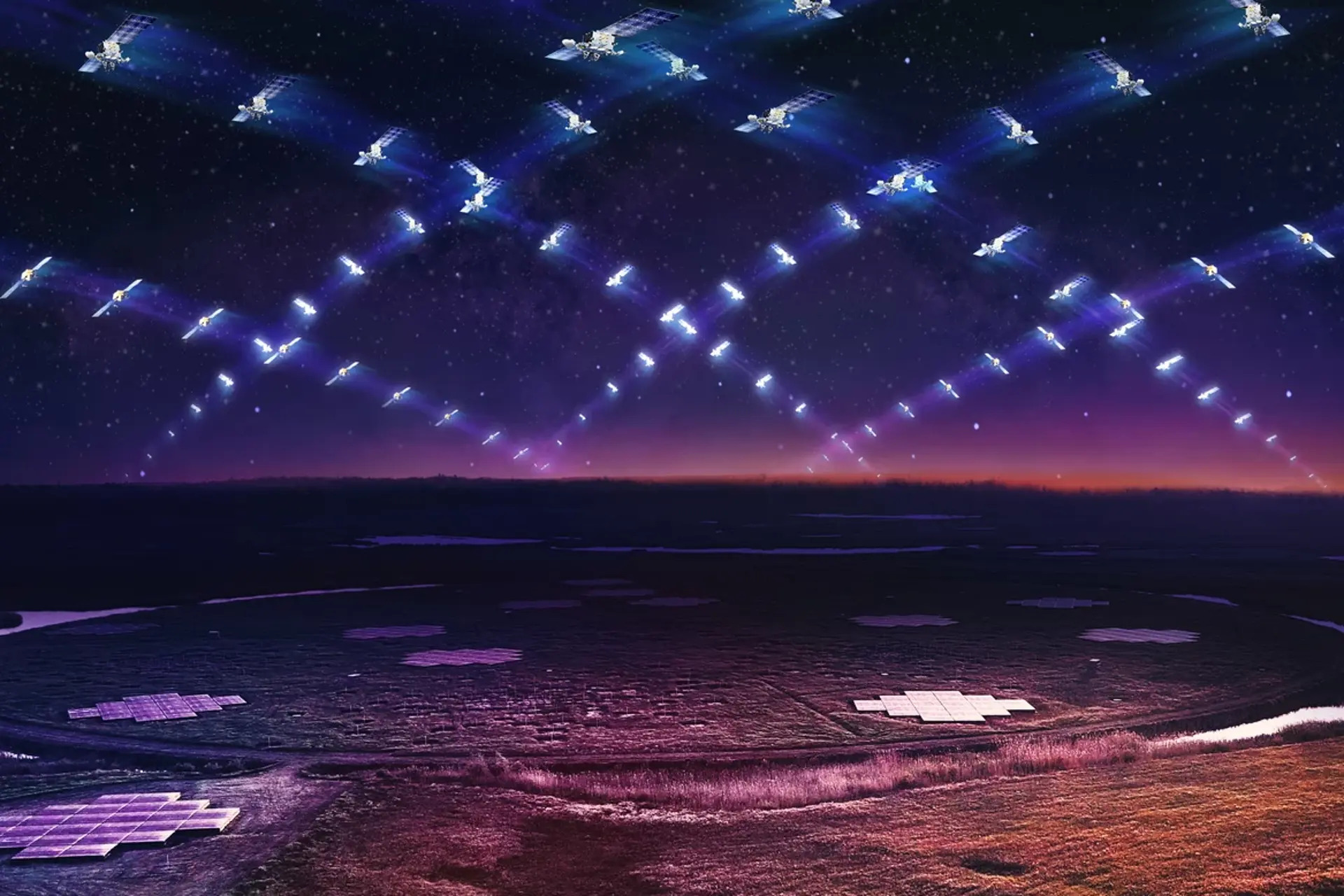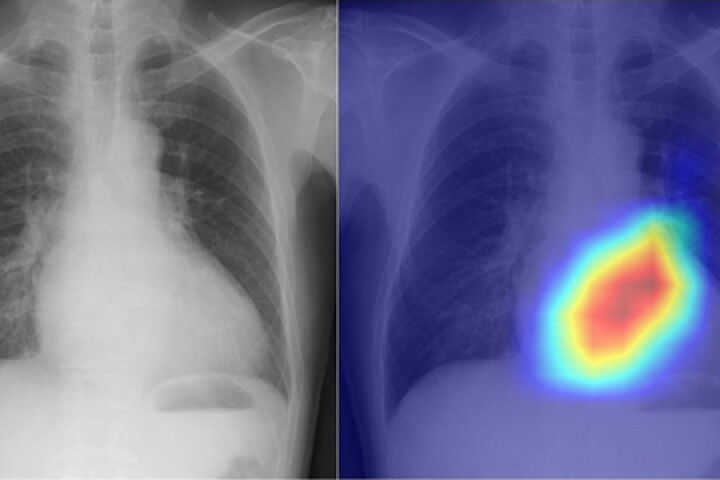
An artist’s impression of a Starlink satellite constellation orbiting above the LOFAR radio telescope. Daniëlle Futselaar (artsource.nl)
Interference from human activities and technology can ruin astronomical observations, so it’s no wonder that these facilities are usually built far from cities in quiet, dark, remote places. But a new threat is emerging to spoil the show – satellite constellations.
Over the last few years, SpaceX has been launching small satellites into orbit that can provide high-speed internet access to regions that normally go without. It may be a noble cause, but with thousands of them up there, they started to leave bright trails across telescope images constantly. SpaceX tried to fix this by making future satellites less reflective, but problems remain.
Now scientists have identified a new issue. They used the Low Frequency Array (LOFAR) telescope to observe 68 Starlink satellites to measure the kinds of radio signals they produce, and how that can affect the astronomical observations of LOFAR and other radio telescopes.
And sure enough, they detected not just radio signals the satellites use for communication, but many of them were also emitting unintended electromagnetic radiation from their onboard electronics.
“With LOFAR, we detected radiation between 110 and 188 MHz from 47 out of the 68 satellites that were observed,” said Cees Bassa, co-author of the study. “This frequency range includes a protected band between 150.05 and 153 MHz specifically allocated to radio astronomy by the International Telecommunications Union (ITU).”
The bigger problem, the team says, is that technically SpaceX isn’t breaking any rules – because there aren’t any. There are no international regulations governing this kind of radiation. The researchers say that with more satellite constellations, from SpaceX and other companies, due to be launched in the near future, regulations should be investigated.
To the company’s credit, SpaceX has been in contact with the researchers on the study and is apparently willing to implement design changes into the next generation of satellites to reduce interference.
“We believe that the early recognition of this situation gives astronomy and large constellation operators an opportunity to work together on technical mitigations pro-actively, in parallel to the necessary discussions to develop suitable regulations,” said Gyula Józsa, co-author of the study.
The research was published in the journal Astronomy & Astrophysics.
Source: Max Planck Institute for Radio Astronomy
–























